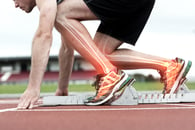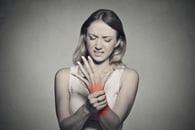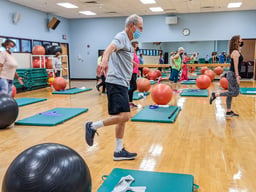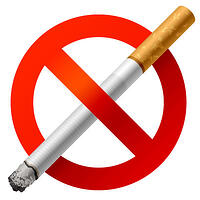Women often make sure to have screenings for breast and gynecological health but forget about their bone health. Having good bone health is important for you to remain mobile and active in the second half of your life.
FACTS ABOUT BONES AND OSTEOPOROSIS
(from Baptist Health)
- Bones are living tissue. Bone changes constantly, with bits being removed and replaced with new bone.

- During childhood and adolescence, you gain much more bone than you lose, so your skeleton grows in both size and density.
- The amount of tissue or bone mass in your skeleton reaches its maximum by your mid-30s. At this point, the amount of bone in your skeleton typically begins to decline slowly, because you lose more bone than you gain.
- Around the time of menopause, women’s production of estrogen declines. This decrease in estrogen production greatly accelerates the loss of bone in most women. By mid-life, you lose estrogen's protective benefits.
- The five- to 10-year period of rapid bone loss after menopause probably accounts for the strikingly high proportion of women with osteoporosis.
- Osteoporosis is an exaggerated loss of bone tissue, a painful and disfiguring disease that develops in older people (usually women) who do not have enough bone density.

- Osteoporosis makes bones more susceptible to fracture, most often the wrist, spine, and hip. Spinal fractures cause stooped posture, loss of height, and chronic back pain. Hip fracture (the most serious consequence of osteoporosis) threatens independence and life.
CAUSES OF OSTEOPOROSIS
- Being underweight
- Excessive alcohol use
- Lack of weight-bearing exercise
- Long-term use of certain medications, including corticosteroids and some medications used for gastric reflux, seizures, thyroid disorders, cancer, and transplant rejection
- Low calcium and vitamin D intake
- Tobacco use
- Caffeine Use
EXERCISE
Regular weight-bearing exercise (which causes your muscles to work against gravity) can help build bone density.
Walking is an excellent weight-bearing exercise, as are water aerobics, low impact aerobics, and dancing. Experts believe that other forms of exercise, such as swimming, bicycling, and rowing, while not precisely weight-bearing, are also beneficial.
Adopt an active lifestyle. Walk short distances instead of driving. Do housework and yard work that involves lifting and carrying. If you spend a lot of time at a desk in an office, it's especially important that you exercise. Use the stairs instead of the elevator and, whenever possible, walk to appointments.
Here at Milestone, we have many classes that would be ideal for people with Osteoporosis including, but not limited to, Walk Tall, Low Impact L1, Mash-Up L1, Just Dance, and Water Aerobics classes.
Before starting an exercise program, talk to your healthcare provider.
AVOID
Certain substances are toxic to bones and should be avoided to protect your bone density.

- Smoking is toxic to bone cells, and extra calcium won't make up for the damage.
- Excess alcohol is also detrimental. Not only is it directly toxic to bones, but it also interferes with proper nutrition.
DIAGNOSTIC TESTING
Early detection of bone loss helps to ensure you start therapy to prevent or treat osteoporosis as soon as you need it. Your healthcare provider can recommend therapy based on the results of the test.


